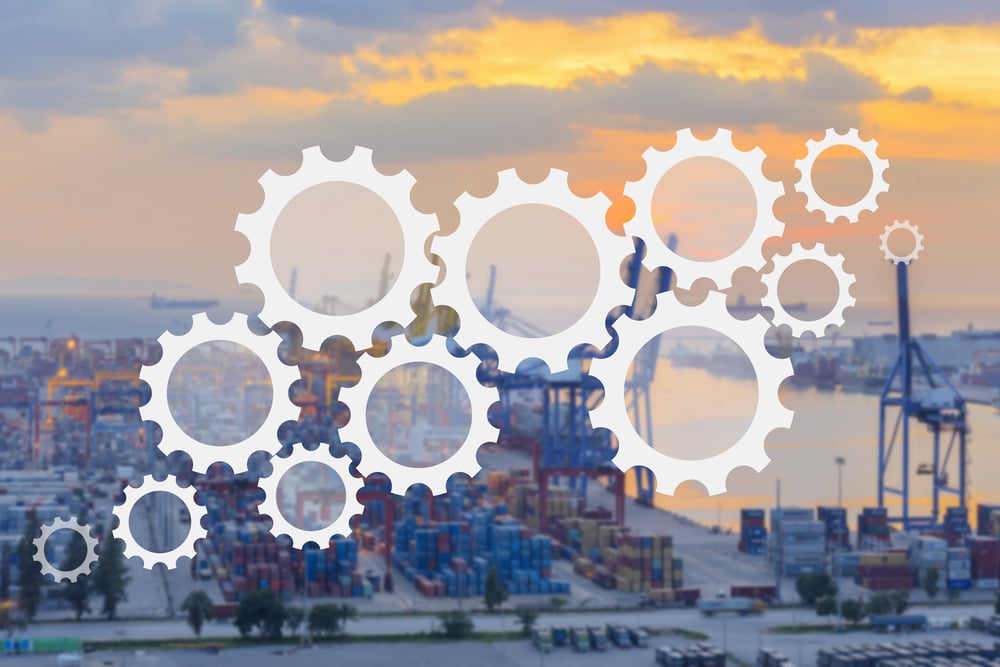As a business owner, you need to make efficiency a top priority. We have previously discussed the importance of investing in automation technology to achieve this goal. We felt it was important to delve into a more specific topic, so we decided to create this blog post on the role of technology in supply chain planning.

As technology has an increasingly greater effect on the world at large and people around the world that use it are becoming more globalized, businesses are having to come up with more inventive and effective ways to use it strategically. Many companies are trying to keep up by taking unprecedented steps. They are having to overhaul their whole historic system in order to pave the way for a new, more advanced supply chain technology system.
One of the biggest applications of technological automation is with supply chain management. From top to bottom, supply chain technology is changing completely, due to robust advances in technology. This blog will look at what the supply chain is, the technology used within the industry, and how it looks to shape the industry.
When discussing the rising changes in supply chain technology, it is important to establish what exactly is meant by the supply chain. Basically, it is a chain of business steps from the basic managed procurement services seeking raw goods right through logistics, production, and distribution to bring a product to the customer at a fast pace, at a reasonable price, and of good quality. For a successful supply chain to thrive, it needs to have optimal management of goods which allows for optimal links in the chain from the raw materials to the final consumer.
Robotization and Automation
The first robot in the workplace was introduced back in 1956. This was one of the biggest breakthroughs in the rise of technology. Robots have played a pivotal role in many applications, but one that doesn’t get enough attention is supply chain management.
While historically automation and robotization have led to large influences within supply chains for decades now (you only have to look at the car manufacturing industry to see this) there is still a sense of excitement for many businesses that would like to depend on it. Advances in automation technology have been made much more widely available with recent advances in technology.
Also Read

It is particularly beneficial for warehouse production supply chains as the automation and robotization allows for one-day or next-day delivery, which is competitive and a true bonus for the consumer. Things like the fast-picking systems, which allow the robot to seek the correct product through size are hugely effective in some sectors, such as pharmaceuticals.
Additionally, old-school automation such as forklifts are evolving with newer technology, which allow for further robotization and a boost in the effectiveness of the machine. On top of this, sensors, safety technologies, and more finely tuned robotic systems means the robots can work better alongside human labor driving down labor prices, mistakes, and storage. This allows for a much more wholly streamlined process from the goods to the consumer.
Increased Collaboration Between Supply Chain Partners
An infographic from Visual Capitalist reports that one of the biggest benefits of supply chain automation is via warehouse automation. However, there are other important applications of supply chain automation. This includes facilitating relationships with supply chain partners.
With increased technological capabilities at hand, companies are much more equipped to be in contact with different stages of the chain. New developments in the field of supply chain technology is making this easier than ever. Being able to track the product as it moves from manufacturer to distributor allows the whole process to become more informed. With this advanced data and knowledge, companies can create more effective business plans and forecasts. Lower costs in management and distribution of the product can either make it cheaper for customers or it makes it a better product overall, which makes the business more competitive in the saturated market. The supply chain and technology work hand in hand to allow for transparency, which, just like the human population is becoming more globalized, is becoming more interconnected at every stage.
Increased Control Over Production
Allowing for better product flow, supply chain technology is being installed into every aspect of the production process from robots and automation to AI and informative data. This wealth of information means the business can identify faults, transparently assess areas of improvement, and allow the customer to be personally touched despite the business being far from personal. Perhaps a prime example of this is the new capabilities of the business to successfully create a next-day-delivery service which leads the consumer into thinking they are being treated by the company. Rather, it is a clear use of technological advances and finely astute cognitive business plans. For this, to work the company needs to have access to finely tuned inventories, effective distribution processes, and accessibility to rapid-acting technology that is in many warehouses like barcodes and scanners, voice hardware, and specific warehouse management systems. The supply chain and technology are working together to incorporate each other into advancements which is undoubtedly going to continue to morph the landscape of commercial companies and continue to benefit the consumer.
Streamlining of IT and the Introduction of AI

As with almost any big business across the world now, every modern supply chain is propped up by data and the use of AI algorithms to function. Using AI and the streamlining of the supply chain and technology companies are utilizing things like data management, machine learning, dynamic pricing, and predictive analysis. As the AI creates algorithms and vast swathes of data for number crunching, companies who have been increasingly using these systems in their supply chain can expect to cut delivery times, effectively manage their inventory, optimize business relations and appeal to the customer both through relationships, prices, and hyper-personalization. AI can create effective advertising campaigns using workstations for deep learning at one end and the collection of data on soil samples for potatoes for raw goods at the other end of the supply chain.
Conclusion
Whilst we are still at the very beginning of this technological overhaul for many supply chains, it can be done, particularly when you look at poster boys such as Amazon. There is no question that supply chains and technology are going over a massive change currently which is bound to improve and enhance the consumer and businesses within the chain. The emerging tech has the capabilities of enhancing the speed, availability, and efficiency of huge numbers of companies. It can easily have the capability to open up markets exponentially. But it remains logistically complicated to install across the supply chain and is an expensive overhaul to commit to. In addition to this, the varying nature of supply chains means there has to be constant tweaking and differentiating according to the exclusive needs of that specific line. The good news is that the very nature of technology and its implementation means that tweaking and altering consistently till a result is found is in its very nature. There is no doubt that this is a hugely exciting time for supply chains, businesses and ultimately consumers alike as we progress forward.
